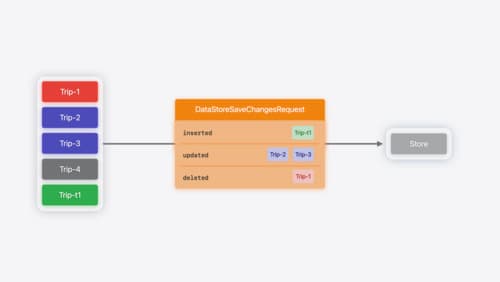Animated update diffable data source
Asked on 2024-08-18
1 search
To implement animated updates with a diffable data source, you can leverage the capabilities of SwiftData, particularly its history tracking features. SwiftData provides a way to track changes in your data store over time, which can be useful for updating your UI efficiently.
In the session Track model changes with SwiftData history, it is explained how SwiftData records transactions and changes, allowing you to query and process these changes in the order they occurred. This can be particularly useful for updating UI components like a diffable data source, as you can efficiently determine which models have been inserted, updated, or deleted.
By using SwiftData's history API, you can fetch changes and update your UI accordingly. This involves fetching transactions, processing the changes, and then updating your user interface. This approach ensures that your UI reflects the most recent state of your data store, and can be animated to show changes smoothly.
For more detailed information, you can refer to the session Track model changes with SwiftData history which covers the fundamentals of using SwiftData history to track and process changes.

Platforms State of the Union
Discover the newest advancements on Apple platforms.

What’s new in SwiftData
SwiftData makes it easy to add persistence to your app with its expressive, declarative API. Learn about refinements to SwiftData, including compound uniqueness constraints, faster queries with #Index, queries in Xcode previews, and rich predicate expressions. Join us to explore how you can use all of these features to express richer models and improve performance in your app. To discover how to build a custom data store or use the history API in SwiftData, watch “Create a custom data store with SwiftData” and “Track model changes with SwiftData history”.

Create a custom data store with SwiftData
Combine the power of SwiftData’s expressive, declarative modeling API with your own persistence backend. Learn how to build a custom data store and explore how to progressively add persistence features in your app. To get the most out of this session, watch “Meet SwiftData” and “Model your schema with SwiftData” from WWDC23.
